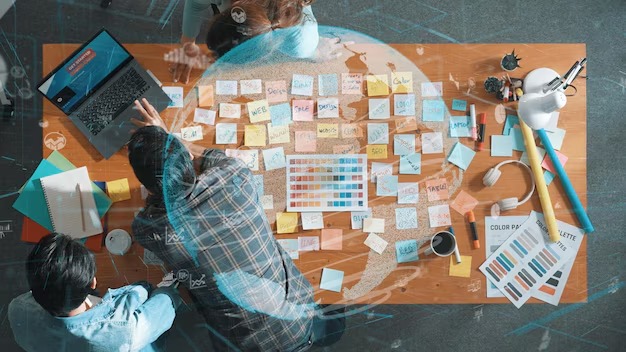Exploring Innovative Applications of 3D Printing in Various Industries
The evolving nature of 3D technology offers remarkable benefits to sectors like healthcare and aerospace in 2025. In the medical field, it allows for customized implants and prosthetics that match individual patient anatomy, significantly increasing comfort and efficacy. Surgeons utilize 3D models for pre-operative planning, leading to enhanced precision during complex procedures.
In the aerospace sector, the production of lightweight components directly impacts fuel efficiency and emissions reduction. Manufacturers employ additive processes to create intricate parts that traditional methods cannot achieve. This leads to a reduction in material waste and accelerates the prototyping process, ultimately enhancing product development timelines.
Construction and architecture also capitalize on this innovative technology, allowing for rapid prototyping of building designs. This not only optimizes the planning phase but also facilitates more sustainable building practices through the use of eco-friendly materials. As a result, structures can be adapted to meet client specifications and environmental demands more effectively than ever before.
Automotive designers benefit by producing custom components that enhance vehicle performance and personalization options for consumers. This has shifted how car manufacturers approach design and production, focusing on efficiency and innovation at every stage of the development cycle.
Customized Medical Implants and Prosthetics
In 2025, tailored medical implants and prosthetics represent a significant leap forward in patient care and recovery. By leveraging advanced fabrication methods, healthcare providers can create devices that meet individual anatomical and functional needs, improving comfort and performance.
Utilizing patient-specific imaging data, such as MRI or CT scans, facilitates the creation of highly accurate models. These models enable the production of implants designed to fit seamlessly within the patient’s body, reducing surgery time and promoting quicker recovery.
- Personalization: Custom implants allow for precise adjustments to match bone structure and surrounding tissues, minimizing the risk of complications.
- Material selection: Biocompatible materials, including titanium and polymers, enhance integration with biological systems while maintaining durability.
- Surgical planning: Surgeons can utilize 3D models for preoperative simulations, leading to better-informed surgical approaches and outcomes.
The integration of sensors in orthopedic prosthetics enables real-time feedback on usage and performance. Enhancements in prosthetic design lead to improved functionality for wearers, allowing for greater mobility and independence.
As adoption increases, ongoing research focuses on minimizing production costs and standardizing processes for broader access. Key benefits for patients include:
- Reduced surgical revisions due to improved initial fit.
- Lower incidence of infection attributed to enhanced surface properties.
- Better overall patient satisfaction with personalized solutions.
Looking ahead, investment in this specialized area is expected to significantly transform healthcare, making tailored medical devices a standard practice in surgical procedures and rehabilitation. Continuous collaboration between engineers, medical professionals, and researchers is vital for advancing solutions that address both established and emerging health challenges.
Rapid Prototyping for Consumer Products
Utilize 3D technology to create prototypes that reflect your product vision with accuracy and speed. By 2025, professionals can produce high-quality models in days instead of weeks, significantly reducing time-to-market for consumer goods.
Prioritize functionality during the prototype stage. Test components for usability and ergonomics, allowing for adjustments based on user feedback. This iterative process helps align the final product with consumer expectations.
Select materials wisely. For early prototypes, consider options like PLA or ABS for their ease of use and durability. As the design finalizes, transition to materials that better represent the intended product qualities, such as strength or aesthetics.
Employ software that integrates seamlessly with hardware. Programs capable of direct slicing can improve the workflow, ensuring that modifications are executed promptly and accurately. This allows for real-time adjustments based on prototype performance evaluations.
Leverage the advantages of customization. Rapid prototyping enables unique designs tailored to niche markets, enhancing brand loyalty. Engage with consumers during the prototyping phase to gather insights that can lead to innovative product features.
Invest in color printing technologies. A visually appealing prototype can better convey the final product vision, capturing stakeholder interest and facilitating marketing discussions. Use vivid colors and textures to simulate the actual product environment.
Incorporate advanced technologies, such as multi-material printing, to explore complex designs with varying textures and properties. This allows for a comprehensive evaluation of how different materials interact, ensuring optimal product performance.
Lastly, document the prototyping process meticulously. Gathering data on iterations and testing outcomes will inform future projects and streamline future developments. It will also serve as a reference point for what worked or didn’t in the creation process.
Architectural Models and Construction Components
Utilizing 3D technology for architectural models significantly enhances design visualization. By 2025, 3D technologies enable architects to produce intricate scale models that accurately reproduce every detail, facilitating better communication with clients and stakeholders. Enhanced accuracy during the modeling phase assists in identifying potential design flaws early in the process, thus mitigating costly changes during construction.
Prototyping and Customization
Rapid prototyping allows for quick adjustments, allowing designers to respond to client feedback without extensive delays. Customization of building components, such as facades and structural elements, can be achieved in lesser time and at reduced costs. This method offers the freedom to experiment with innovative shapes and materials, pushing the boundaries of traditional construction.
Efficiency and Sustainability
Incorporating additive manufacturing in construction components improves resource management. This approach reduces waste generation by producing only necessary materials. The 3D methods utilize fewer resources while maintaining high strength-to-weight ratios, making buildings lighter and more energy-efficient. By 2025, this trend is expected to lead to more sustainable practices within the construction sector, significantly reducing the environmental impact.
Aerospace Parts Manufacturing and Repair
Utilize additive manufacturing techniques to create lightweight components that meet the stringent requirements of the aerospace sector. In 2025, various airlines report significant reductions in part weight and improved fuel efficiency through the use of these methods.
Focus on using titanium and composite materials, which exhibit excellent strength-to-weight ratios. These materials are particularly advantageous for producing turbine blades, brackets, and structural components.
Implement on-demand production capabilities for parts that are no longer in standard inventory. This approach minimizes waste and cuts down on lead times, enabling quicker repairs and maintenance schedules.
Consider using advanced scanning technology for reverse engineering damaged components, allowing for precise reproduction. This technique enhances repair options, especially for aging fleets.
Train staff in the latest technologies related to manufacturing processes and post-processing techniques. Continuous education ensures the longevity and reliability of parts produced.
Establish strong quality control measures. Employ non-destructive testing methods such as X-ray and ultrasonic testing to ensure that parts meet safety regulations before being deployed.
Regularly evaluate operational workflows to integrate efficient practices. By streamlining processes from design to production, aerospace manufacturers can achieve significant time and cost savings.
Leverage collaborations with research institutions to stay updated on innovations in materials science and engineering. Such partnerships can drive advancements that improve performance and safety in aerospace components.
Consider regulatory compliance thoroughly. Maintaining adherence to aviation standards is crucial for securing certifications on new parts.
Fashion Design and Personal Accessories Production
The integration of additive techniques within fashion facilitates bespoke creations and accelerates prototyping processes. In 2025, designers are increasingly turning to these methods to craft unique pieces that reflect individual style and preferences. By utilizing specialized software for 3D modeling, designers can iterate designs rapidly, reducing lead times from concept to final product.
The use of advanced materials such as flexible thermoplastics and bio-based composites allows the creation of comfortable, lightweight accessories without sacrificing durability. These materials also support sustainable practices, appealing to environmentally conscious consumers.
Collaborating with digital artisans can enhance creativity. Engaging with professionals skilled in generative design can yield innovative forms that would be difficult to achieve with traditional techniques. This partnership leads to unexpected shapes and structures that push the boundaries of conventional fashion design.
Implementing additive techniques in production helps minimize waste and lower costs. The ability to produce items on-demand reduces inventory burdens, allowing brands to respond swiftly to changing trends without overproducing.
| Material | Benefits | Usage in Fashion |
|---|---|---|
| Flexible Thermoplastics | Lightweight, durable, customizable | Footwear, jewelry |
| Bio-based Composites | Sustainable, eco-friendly | Accessories, apparel embellishments |
| Metal Alloys | High strength, premium finish | Luxury accessories, statement pieces |
| Resins | High detail, versatile | Fashion prototypes, custom adornments |
Incorporating these advanced techniques not only enhances creativity but also aligns with modern consumer values prioritizing individuality and sustainability. The approach opens up numerous paths for fashion innovators eager to establish a personal connection with their audience.
Automotive Component Production and Testing
For 2025, adopting additive manufacturing techniques for automotive component creation is highly recommended. This approach allows for rapid prototyping, significantly reducing lead times and costs. Employing materials like nylon, aluminum, and thermoplastics can enhance the durability and performance of parts, enabling manufacturers to meet precise specifications.
Testing prototypes using advanced methods such as computational fluid dynamics (CFD) and finite element analysis (FEA) can identify potential weaknesses before mass production, ensuring reliability and safety. By incorporating real-world simulations, companies can optimize designs for weight reduction without compromising strength.
Investing in multi-material technologies offers flexibility in designing components with integrated functionalities, which is particularly valuable in optimizing engine parts and structural elements. Utilizing these techniques can significantly enhance the overall efficiency of vehicles, aligning with the global push towards sustainability.
Consider creating a dedicated team focused on integrating these innovations into the production cycle. This ensures that the transition is smooth and that the workforce is trained effectively. Collaboration with research institutions for continuous improvement in materials and processes can lead to breakthroughs in component design.
Finally, maintaining comprehensive documentation of the design and testing phases not only streamlines development but also aids in compliance with automotive safety regulations, fostering trust and reducing liability. Prioritizing these strategies in 2025 will position manufacturers favorably in a competitive market.
Q&A: 3D printing applications
What Is three-dimensional printing and why has 3d printing has become central to manufacturing technologies in 2025?
Three-dimensional printing uses 3d printing technologies within additive manufacturing technologies, and 3d printing is used in a wide range of applications with applications across various sectors; the printing has become mainstream because the 3d printing industry now sees a range of applications and the adoption of 3d printing across design and manufacturing.
How Does the printing process differ from the 3d printing process compared with conventional manufacturing and traditional manufacturing?
The 3d printing process is an additive manufacturing process, a printing method and printing technique that builds layer by layer, while conventional manufacturing and traditional manufacturing rely on subtractive manufacturing and subtractive manufacturing processes; this manufacturing method reduces waste and shows clear uses of 3d in modern production.
What 3d printing materials and types of 3d printing exist, including advanced methods like direct metal laser sintering?
There are many 3d printing materials and types of 3d printing, from inkjet printing and laminated object manufacturing to metal 3d printing via direct metal laser sintering; each 3d printing technique is a type of 3d approach chosen for specific applications and various 3d printing setups.
How Do 3d design and 3d scanning help create 3d data for a 3d object that 3d printers to create?
3d design and 3d scanning supply geometry so you can use 3d printers to create a precise 3d object; in practice, 3d printing allows engineers to use 3d printing to create fixtures, and 3d printing technology to create tooling, while 3d printing to create end-use parts streamlines design and manufacturing.
What Are the benefits of 3d printing and the advantages of 3d printing for printing uses like rapid iterations?
The advantages of using 3d printing include faster printing speed, fewer constraints, and on-demand builds offered by 3d printing; in short, 3d printing offers mass customization, 3d printing provides tooling on demand, and 3d printing gives teams agility that traditional manufacturing methods rarely match.
Where Is 3d printing used across the manufacturing industry and industries like aerospace or consumer goods?
Industrial applications show 3d printing provides parts and jigs for applications across factories, with various applications in the manufacturing industry; organizations are using 3d printing technology on lines, utilizing 3d printing for spares, and driving integration of 3d workflows as printing uses expand.
How Is 3d printing also transforming the medical industry with medical applications and medical 3d printing?
Clinics use 3d printing to create 3d printed models for planning, and 3d printed parts for guides; the medical industry highlights medical applications for implants, and medical 3d printing demonstrates how 3d printing enables patient-specific devices that 3d printing is also able to iterate quickly.
What Role do advanced 3d printing and desktop 3d systems play alongside 3d printing services for custom 3d work?
Advanced 3d printing supports advanced applications at scale, while desktop 3d and desktop 3d printers let teams prototype and use 3d printers in-house; when capacity is tight, 3d printing services deliver specific applications on demand, ensuring a wide range of applications remains accessible.
What Could the future of 3d printing bring if 3d printing could remove more constraints and additive manufacturing allows new forms?
The future of 3d printing suggests 3d printing enables lattice parts and like 3d mass customization for consumers; 3d printing could fuse smart materials, 3d printing is also expected to enhance sustainability, and additive manufacturing allows local production that 3d printing offers today only in pilots.
How Should teams compare traditional manufacturing methods with using additive manufacturing when they want to use 3d printing?
Teams can use 3d printing for a 3d printer prototype while a standard office printer handles paperwork, then evaluate subassemblies using additive manufacturing; when a manufacturing method demands complexity, the use 3d printing and the use of 3d printing let engineers create 3d geometry quickly, 3d printing provides flexibility, and the 3d printing offers pathways many conventional manufacturing methods cannot match.


